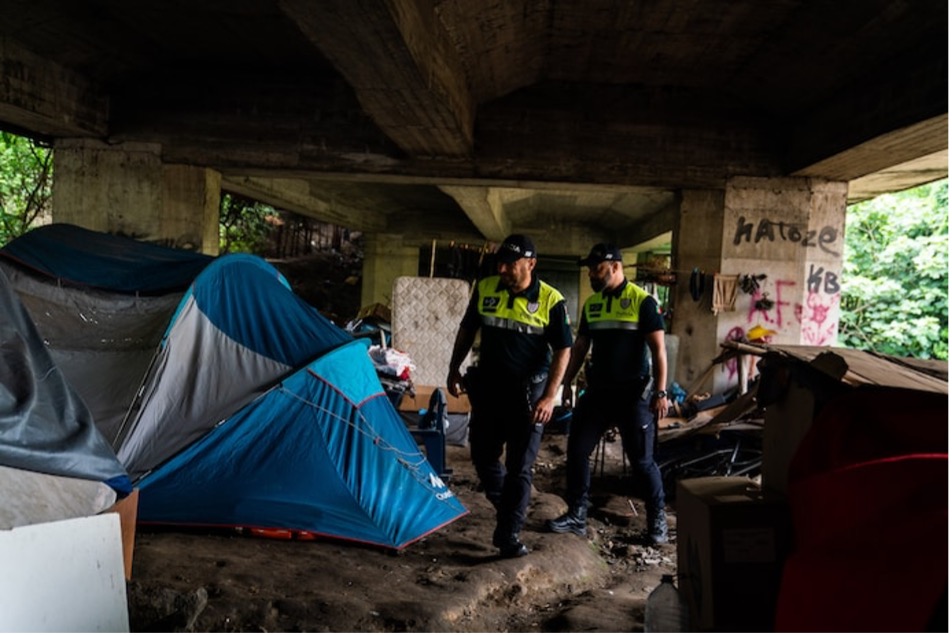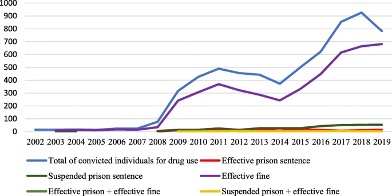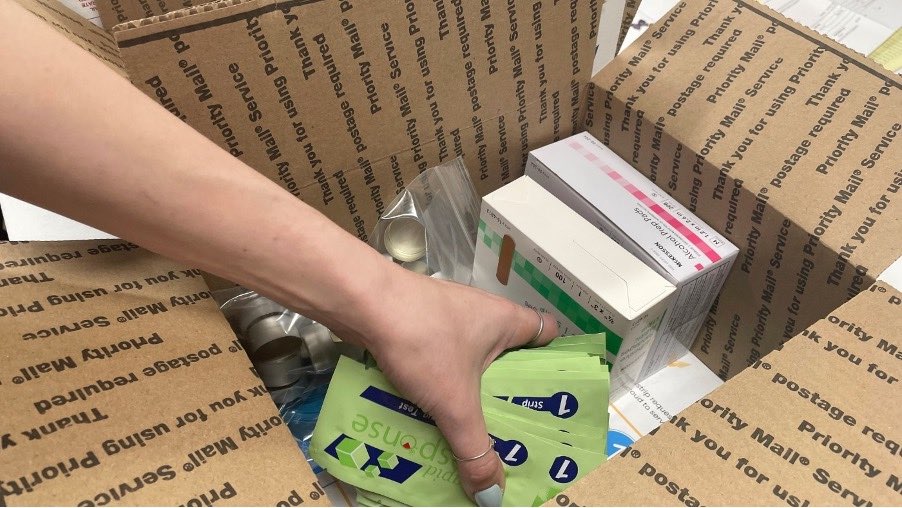Portugal, a beautiful country situated in the north-west of Europe, has been in the news recently because of its drug decriminalization model of regulation and administration. However, this is not the first time that Portugal’s drug policies have made waves. In fact, the Portuguese model of drug regulation, though initially met with scepticism, yielded drastically positive results in just a few years after it was instituted. Through major policy upheaval, the Portuguese government enacted a series of systemic changes to try and control the problems related to drug possession, manufacturing and trafficking.
In the late 1990s, drug use in Portugal was nearing an all-time high. Lisbon, the capital city of Portugal was known as the “heroin capital of Europe” in 1999. An increase in drug use resulted in a subsequent increase in HIV infection rates and drug related AIDS cases across the country, at 104 new HIV infections per million people in the year 2000. The hardships and afflictions brought about by this surge in HIV cases was one of the most prominent driving forces in favour of an institutional intervention strategy.
Before we delve into the way drug decriminalization was carried out in Portugal, it is important to understand what drug decriminalization is and why it garnered such support from policy makers and the masses alike.

What Is Drug Decriminalization?
Drug decriminalization is a form of progressive drug use regulation. It refers to removal of criminal penalties for certain drug related violations, specifically possession of drugs for personal consumption. It can be understood as the shifting of drug use regulation to the jurisdiction of the public health sector, from its earlier position under the jurisdiction of public order. Thus, drug decriminalization will help in reducing the number of individuals being tried for criminal offences in matters relating to the possession of drugs.
Drug decriminalization aims to not only reduced the amount of individuals being tried for criminal offences, but to also reduce arrest rates and incarceration rates. Further it also aims to increase rehabilitation rates, reduce judicial costs and get rid of any racial, or other bias in the adjudication of drug related offences and crimes.
In this way Drug Decriminalization aims to create policies that focus more on human rights and rehabilitation. It especially focuses on removing barriers to health care and eradicating feelings of exclusion amongst people who consume drugs. One of the foremost objectives in such a policy would be to encourage individuals to seek help in battling their addictions and then subsequently be rehabilitated. Nearly two dozen countries have implemented (or are in the process of implementing) these policies.
How Was Drug Decriminalization Carried Out In Portugal?
A nationwide law decriminalizing drugs was passed in Portugal, on July 1st, 2001. This law instituted a new framework that no longer classified the usage and possession of drugs, including substances like heroin and cocaine, as criminal infractions. Rather they were to be treated as administrative violations. Thus, the decriminalization model in no way legalised the usage of drugs, instead it just removed the onus of adjudication and procedure of drug related incidents from the realm of criminal justice.
A distinction as made between a drug user and a dealer. Drug trafficking was still prohibited and was defined as the “possession of more than the average dose of ten days of use” of drugs, while personal consumption of narcotic substances was now decriminalized. The sale of drugs to a minor remained prohibited, and similar to other drug trafficking crimes, was punishable by 4 – 12 years of imprisonment.
In practice, this model was carried out as follows:
When an individual is found to be possessing drugs, he is brought to a police station, where the drugs are then measured. If the amount of drugs exceeds the limit specified for personal consumption, they are charged as a drug trafficker and may be sentenced to 1 – 14 years of imprisonment. If the drugs in their possession weighed less than the specified limit, the individual must appear before the Commission for the Dissuasion of Drug Addiction the next day, where they will be interviewed by either a psychologist or social worker. They must also appear before a three-person panel that advices and provides guidance on fighting drug addiction. Failure to accept these services may lead to fines, community service etc.
This model aimed to create institutional pathways to make treatment and rehabilitation viable for every identified drug user.

Initial Results
The model yielded stellar results initially. In 2018, for instance, the number of heroin addicts had fallen to 25,000, a far cry from the 100,000 users in the previous years. In comparison to Britain and the United States, Portugal had the lowest rate of drug-related fatalities in Western Europe, and HIV infections from drug injections had decreased by 90%, with the rate of new diagnoses dropping steadily from the early 2000s.
Further, this initiative cost less than 10 dollars per resident per year, which was much lower than USA’s expenditure for similar polices – approximately 1 trillion dollars – over the same period. Total savings on social costs like medical expenses, legal fees, and lost individual income, were 12% over the first ten years, and later rose to 18%.
The Current Scenario In Portugal
Following Portugal’s example several countries have turned towards drug decriminalization and liberalization as a viable method to combat the War on Drugs. For instance, drug decriminalization policies were a topic of contention in the UK in the late 2000s. One such endeavour was seen recently in the state of Oregon in the United States of America.
However, Portugal seems to be having doubts now. The entire system may be close to be unravelling and experts believe that this is a result of two factors. The first being international drug smugglers who still continue to use Portugal as a gateway into Europe’s black market for drugs. They attacked the country’s entry points, so as to ensure that the flow of illicit persisted.
Secondly, Portugal cut back on funding for its programs as a result of the numerous less than prosperous financial years the nation experienced. The global financial crisis of 2007 – 2008 also exacerbated the situation by adding budget pressure, subsequently leading to severe policy cuts. This policy disinvestment in turn heavily undermined previous efforts undertaken in the direction of rehabilitation of drug addicts. Subsequent decentralization of the drug decriminalization model led to fragmented results, seeing as a bulk of the activity was now being carried out by NGOs.
Cuts in funding were matched by a decline in the number of identified drug users enrolled in treatment facilities, as we see how the numbers drastically dropped from 1,150 individuals in 2015 to 352 drug individuals in 2021. Further, the number of adults reporting illicit substance use has also witnessed a 7.8% increase since the drug decentralization model was first instituted in 2001. Overdose rates have peaked and reached an all-time high, while drug related crimes have also been on the rise, with there being a significant increase of 14% from just 2021 to 2022.
The amount of individuals convicted for drug use and rates of effective fines for drug related infractions have also seen a significant increase from 2002 to 2019.
Drug addiction seems to linger at every corner of this beautiful European country, offering no real respite, despite the drug regulations put in place. Policemen say that in spite of the increased patrolling in risk prone areas, they feel that their hands are tied and that they cannot do much given the existing laws. There is an apparent fatigue in the administrative procedure as state funding for rehab facilities has dwindled. The number of individuals seeking institutional means of treatment, guidance and rehabilitation has drastically decreased, which could be in part attributed to frazzled policemen who are less than motivated to register drug users.
However, experts remain adamant that decriminalization is still the lesser of two evils. It is their belief that punitive action will only prove to be more harmful in the long run.

The Road Ahead
Drug decriminalization as a theoretical model appears to be strong, however, the incidents from Portugal tell us that this model only stayed effective for the first few years after its institution. This begs the question of the effectiveness of the drug decriminalization model and whether tax payer money should go to such a scheme if it only promises short run results.
What is important to note here is that drug decriminalization cannot be instituted as a stand alone policy. It is not a one stop solution to the problems of drug addiction and trafficking and to consider as such would be a grave mistake. Drug decriminalization must be coupled with supplementary actions like increased investment in treatment options, rehabilitation and awareness campaigns.
It is also important to understand that drug use, whether illegal or otherwise, will always carry with it a certain amount of risk. Policies built on the drug decriminalization model rely heavily on striking the balance between what should be permissible and what shouldn’t. Models like the one instituted in Portugal will always toe the line of morality and safety unless they implement measures and initiatives to counteract the harmful effects of drug use.
The question remains- How does one go about making this model a better fit for society, ensuring that it will yield positive results that can be sustained with ease?
For starters, construction of the model must be done with the utmost care, keeping in mind the desired behaviours that the model is trying to bring about. It is also important to ensure that the model being designed should not be rigid. Policy formulation and implementation involves several learning curves, thus making it important to understand when to cut your losses and move on to creating a new model, and when to simply revamp an existing model.
This is especially essential in the face of financial difficulties like funding constraints and budget cuts. When the key elements of the programme are identified correctly, policies can be geared around the same to make them more effective.
Further, constant monitoring and maintenance of drug decriminalization models and policies is required if one wishes to create a sustainable model that will go on producing positive results.
Thus, to conclude, the drug decriminalization model is a complex strategy that aims at tackling drug trafficking and substance abuse by shifting the focus to a more human oriented approach over a formerly clinical and punitive approach. The model looked at drug addiction as a form of illness and identified the need for specialised treatments for all those suffering from this disease. The prime focus of this policy was to increase the rates of addicted individuals seeking help and rehabilitation. This was done by allowing these individuals to be characterized as having committed misdemeanours instead of criminal infractions.
While this model yielded good results initially, a lack of sustained system maintenance and upkeep led to the creation of an administrative environment that grew fatigued, thereby rendering it unable to effectively continue implementing the model to produce positive results.
It is therefore up to policy makers to learn from what happened in Portugal and institute policies that will bring about positive results through their mechanisms, which can only be done if drug decriminalization is looked at as a single measure amongst many others that must be implemented to win the war on drugs.
Written by – Nandini Pillai
Edited by – Khalid Khursheed




